The fears, lives, and preparations for winter in liberated Donetsk Oblast

“My relatives, you are free!" This inscription hangs over a steep rise in the liberated city of Izyum in Kharkiv Oblast facing the Seversky Donets River, which flows into the Oskol. This is where Donetsk Oblast begins. It is one of the toughest fronts for Ukraine now. About 10% of the territories of the region occupied by the Russian Federation have been liberated. For the rest, there is heavy fighting.
How are people living and preparing for the winter, having survived a long occupation, and now sitting practically on the front line?
“Where we just stopped, the whole earth was covered with “petals,” says Ivan Kiro from the Khizhaki special consolidated patrol police unit.
"These are small, high-explosive anti-personnel mines dating back to the Soviet era, deployed remotely with cluster shells. At some point, the locals simply raked them with shovels.”
Ivan is a businessman and owner of the Uyut (Comfort) construction company, but in February he joined the defense of Kyiv and its oblast. Since then, he has gone on various combat missions on almost all fronts – from Kharkiv to Kherson, and now here in Donetsk Oblast. According to him, this is one of the most heavily-mined regions. The forests were overlaid in such a way that it was impossible to pass – various mines, particularly these “petals,” were insidiously burrowed into the soil everywhere.

We are slowly moving along the road leading to Lyman, one of the most strategically important cities in the oblast to be liberated since the start of the full-scale Russian invasion. The morning fog awkwardly tries to drag out the traces of the war. But it heightens them even more – craters from battles, skeletons of burnt cars, damaged power lines, destroyed bridges and small crossings.
When we stop at the first village, it seems that there is no one here. No surviving houses, either. Almost every courtyard has black-and-gray ruins. The military confirms that most of the residents left either during the occupation or after.
Finally, we stop near two men to ask if they need anything. And the magic happens immediately. The magic of viral radio. Within a minute, a crowd is seen in a seemingly abandoned village with phantom houses. Some were prepared, coming out immediately with wheelbarrows. They say that humanitarian aid is often distributed in boxes that are difficult to carry in your hands. And if you take a few for your family, then even more so.
A month ago, the names of settlements in this region were found only in the reports from the General Staff and on battle maps recording changes in the front line. For the elderly Sasha, the front line crossed his small homeland twice.
“It was like being in a mousetrap,” he said.
“A very dangerous one. I couldn't even visit my mother. She was 94. She was in Kramarorsk. She had been waiting for me all that time, but died without having seen me. Why have they (Russians) come to us then?"
“Look, just here a tank drove over us,” interjects Halyna Mikhailivna. She is the director of a tourist resort in Lymansky District. She is well versed in the local sights, but now she simply gestures to a broken house and a small hill. This is a cellar in which there were about 10 people hiding when, according to her, a Russian tank drove over it (or at least alongside it). She now stands in line for a van with humanitarian aid and calls people to it in a voice that does not accept objections, because she knows exactly who needs what.
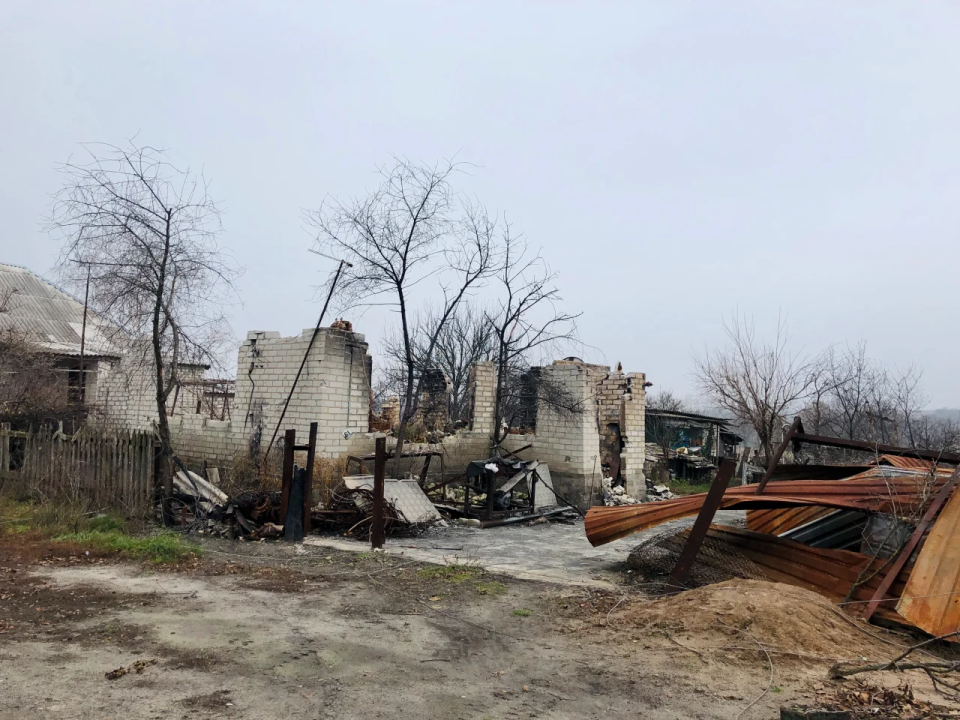
Medicines are in greatest demand. The requests are constant.
“For a cough, for blood pressure, for stomach problems, and also paracetamol for fevers and Corvalol (a herbal remedy for stress – ed),” she says.
The second request is for warm clothes, socks, hats and gloves. The third, oddly enough, is food for dogs and cats.
“This is our home”
The locals do not even hope that they will have electricity, which has been out for four months now. It won’t be back by winter. They count on their own strength. And the main answer to the question of how they prepare for the cold is “firewood,” and some ‘strategic reserves.’
An unusual crowd gathers in the center of Shandryholove in Lyman District. Ahead of us, humanitarian aid from a Norwegian organization has arrived in this village. They distributed groceries, mainly cereal grains, sugar, salt, and vegetable oil. They also handed out household chemicals, in addition to adult diapers. While the first packages were handed out to everyone, when it came to the diapers, the volunteers correctly asked people if they really needed them. 86-year-old Lida initially refused, then changed her mind and took two packs. Her neighbors were surprised.
“Why? You don't need diapers yet,” the said.
“Not now,” Lida answered judiciously. “Who knows what will happen in a month.”
This is one of the locals’ big fears: the help will end, but there is no money to buy anything on their own. There is no work, and pensions have begun to be paid out only partially, and not to everyone, because updated lists are being compiled slowly. Hence all the hope for strategic reserves.
64-year-old Valentina Ivanivna is also waiting for winter, straightening her stack of firewood. But in her case, she has to drag them from her yard “to the apartment,” as she calls the place where she lives. Her neighbors left the village and let her live in their house for free until spring (nobody plans anything here for a longer period of time. It all comes down to ‘we live until March, then we will see’).
Her own house was bombed. First, one shell flew in, but the house still stood. Then, a second hit, and the house shattered to the ground almost completely.
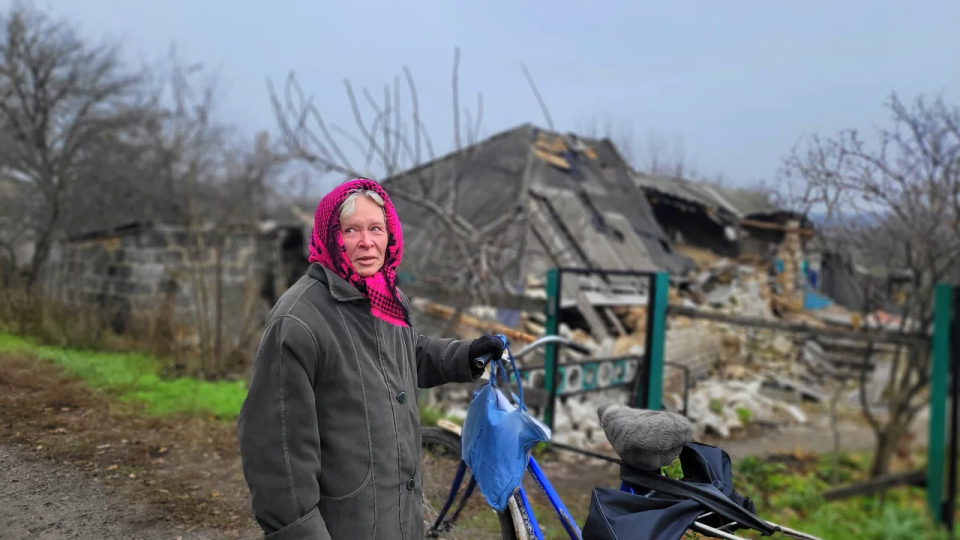
“The Russians came, looked at it, made a description, measurements, clicked their tongues and promised to rebuild it. Yeah, sure,” she said.
Valentina Ivanovna is glad that her brother managed to get the dog out. At these words, the dog, Rizhiy (Redhead) raises his voice, hoping that it signals that he can get some more to eat. The woman jokes that the volunteers gave her a bag when they left.
“Well, so be it,” she says.
“There is no house, at least there will be somewhere to put the things.”
Although there are not many things. Everything in the bag was donated by her neighbors. Jokes are quickly replaced by tears. Without one’s own walls to live inside, it is very hard, she sighs in the end. But she's not going anywhere.
“Anyway, this is my home, this is our land,” she explains.
Lyman. Red and black
In a conversation with Kiro, I share the observation that Donetsk residents are reluctant to make much conversation – first business, then talk. Ivan says that in the first days, when his special unit came here to help re-establish peaceful life in the liberated territories after the Ukrainian army’s counteroffensive, he observed an unexpected picture: people looked away, and if they had to walk along the same road, they switched to the other side. It turned out that the Russians forbade residents to raise their eyes, look at them, or walk along the same side of the street. They would beat people for this.
On the right, a large gray-concrete pedestal reading "Red Lyman" (the former name of the city, changed as a result of Ukraine's 2015 De-Communization Law – ed) emerges. According to the Donetsk Regional State Administration, 70% of this city, liberated almost two months ago, is unfit for habitation. If the roofs or facades of houses are not damaged, then windows are completely broken out or internal ceilings are destroyed. Of the more than 20 thousand people, only a few thousand remained.
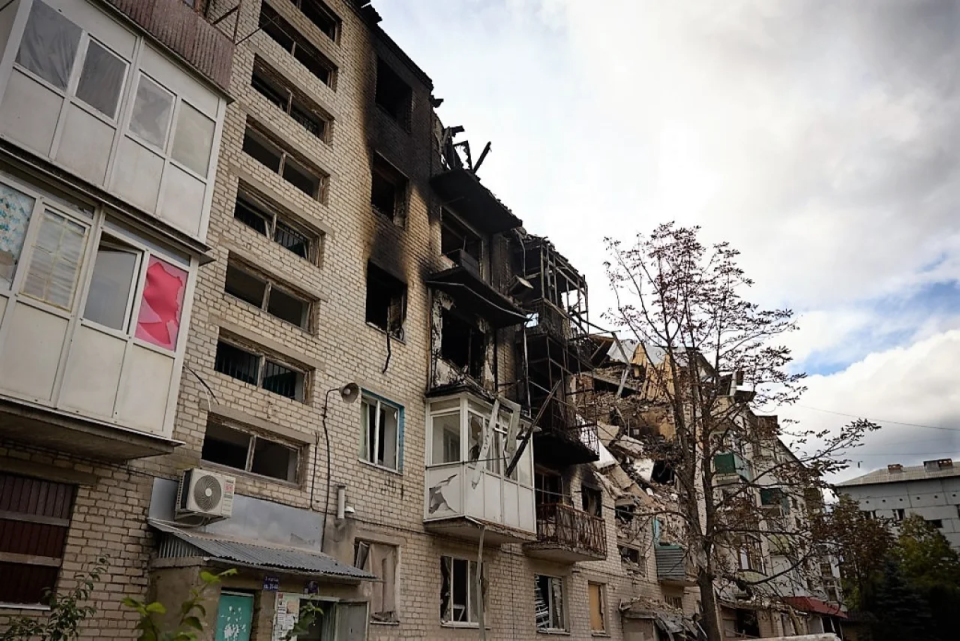
We move to the northern regions. There, according to the military, aid gets comes less often than it does to the center. Everything repeats itself, like film jammed in a projector: there is no one on the wide streets, the silence is broken only by the distant sounds of explosions and the piercing November wind. But as soon as we turn into the courtyards, life is in full swing, and in every sense. Locals spend almost their whole days in their yards, because there are bonfires right at the entrances, where you can warm up and cook dinner.
“Come to me for cutlets! Will you have cutlets? Fresh, just cooked,” calls out self-described local YouTube star, Baba Raya, to the assembled strangers.
She is wearing a beet-colored apron and is busily running between the fire, where the kettle is boiling, and a large pot with the cutlets. There is a small table next to it, on which a tome titled Home Family Medical Book rests. All this against the backdrop of a blackened crater. The Russians were driving a tank along a nearby street and decided to fire at a high-rise building. Everything collapsed from the second floor to the basement.
“We were hiding right there,” says Baba Raya, who then leads a tour to show the basement from which almost no one emerged for about four months, hiding from shelling.
“Half a meter to the left and none of us would be here now.”
According to her, nine families live here (although, of course, the premises are not at all fit for this), in the house opposite – 19, including one family who moved in 2014 from Horlivka. They don’t want to leave their home again. When asked where she plans to live this winter, Baba Raya, like the others, smiles broadly and without hesitation assures that she will be here.
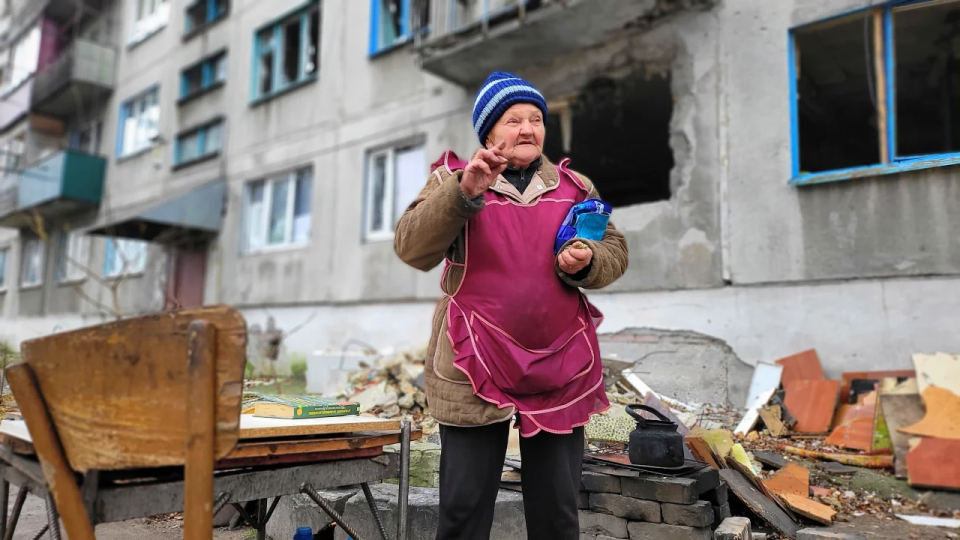
“We have already experienced so much, where could we go now?” she says.
36-year-old Maxim repairs roofs in civilian life. He says that now every other person comes up to him with a request to do something before the frosts. But he just shrugs his shoulders now, as nothing can be done with-out materials. The man himself also ended up on the street, because he lived on the fifth floor of a building where a rocket hit. Now, he and a friend have arranged to live in part of a basement in a neighboring building, where they have three beds and a pot belly stove. To get to this room, you need to go through a whole basement labyrinth under pipes, through narrow openings, and through a pungent smell that stays with you even on the street. I again think how everything happening in this yard is occur-ring in the 21st century.
We go further and see another lively picture. Near one of the apartment building entrances there is a tray with fruits, vegetables, soda, tea, and even fish and meat. Oleksandra, who’s selling this food, has two children and is from this part of the building. She says that her store is almost the only one operating in the city, but it is difficult and far for neighbors to get to the center where it is located, so Alexandra brings some of her products directly to the building. She herself, however, moved in with relativesin a separate residential area a few months ago, where there is both well water and firewood for heating. And here, where her apartment is, the ceiling between the third and fourth floors is damaged.

Ham for 65 hryvnias, hake for 150 hryvnias, sprats for 90. The choice is wide. The products come from Kramatorsk. But people buy mainly tea or single pieces of fruit. There are again explosions audible nearby, for the umpteenth time in the couple of hours that we spent in Lyman. But almost no one pays attention, as everything is now much quieter than it was during the occupation. Even exhausted and dirty cats calmly and proudly watch the tray where the tasty fish lays.
“Look how handsome they are,” Alexandra smiles.
“We have all sorts – a British Shorthair, even a Maine Coon. People left them behind when they left, so now we are looking after them.”
I remember again that one of the important points of help here is animal feed.
You can't keep silent
When you ask the locals where they get news from, the answer is usually the same.
“People tell us something, relatives call with something,” they say.
“Rumors and all.”
But you know, for example, that we liberated Kherson, I clarify.
“Yes, we know,” they wave their hand at me. And it sounds like their response comes not from the news, but from the fact that they really know what it's like to be freed and what to expect next, what life is like after liberation.
We are about to leave when I start talking to 52-year-old Natalya, a rail-way station worker. As soon as the Russians entered the city, she left for Khmilnik with her daughter and granddaughter. There they were provided with housing. But on June 16, she had to return.
“My son was killed. Serhii. 30 years old,” Natalya says out loud what everyone seemed to be trying to avoid during their entire stay here.
“He had no weapons, nothing. Shot right on the road. I barely recognized him."
At the central cemetery, according to the National Police, about one hundred fifty bodies were exhumed.
"For what?” she asks me. “For what was he killed?
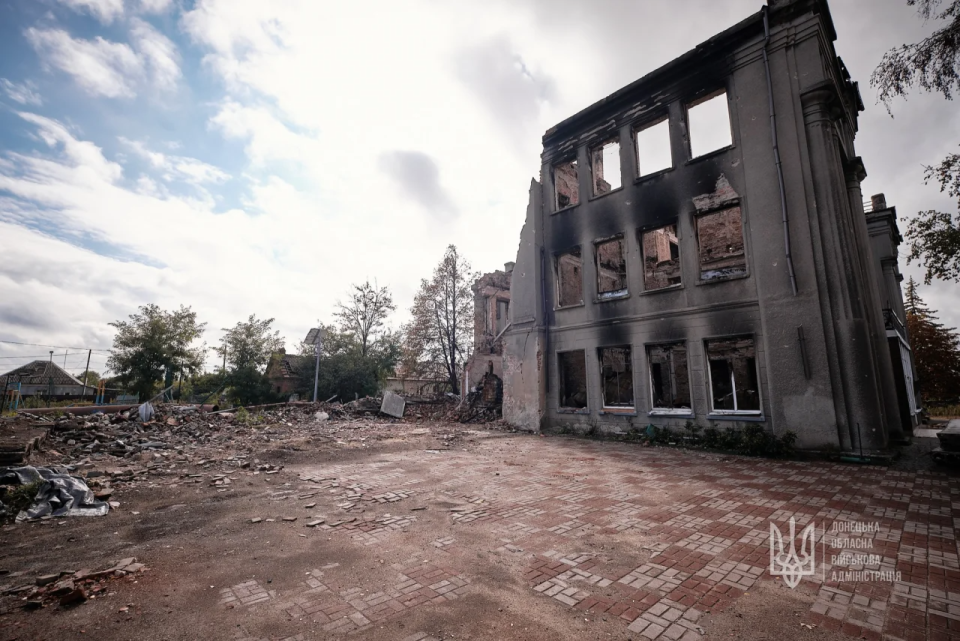
For what and why are the main questions here, hiding even behind the silence. People loved their lives and had no plans to change anything radically. Now their main goal is to survive until spring, and then see what comes next. Perhaps not talking about one’s pain and not remembering what happened is one of the ways to hold on, no matter what.
Read also: Young people from occupied Donbas face major problems in obtaining Ukrainian citizenship
Even the very sense of time here has been reduced to seasons, and occasionally to individual dates. Power was last available at the end of the summer. The Russians came in the spring (because on May 9 they were definitely “celebrating” here on a grand scale). Our boys arrived in the fall. Minutes, hours and days merged into a single whole called "survival."
At night, when we were returning from Lyman, the weather changed again to the next season. The first snow has gone. On the dark road in these conditions, the only reference point was a military vehicle and its dimensions. I thought that this best describes the situation in the Donetsk Oblast, and in general in Ukraine – when darkness and uncertainty are everywhere, but the lights of the Ukrainian Armed Forces are ahead. And further on, spring.
Read the original article on The New Voice of Ukraine

